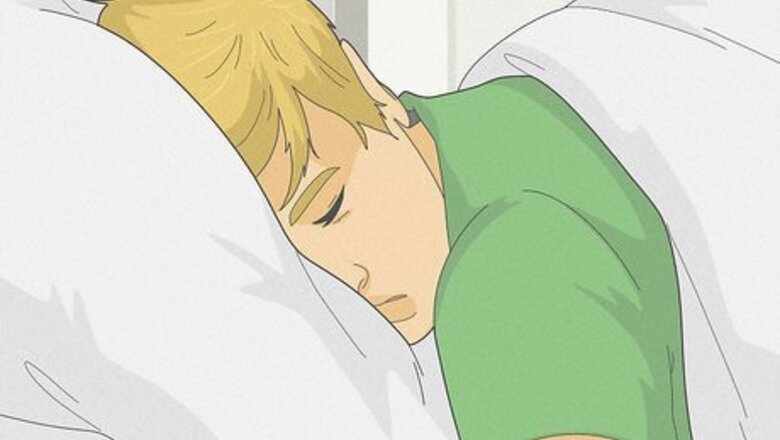
views
- Some studies show that marijuana may help you get to sleep more quickly and stay asleep for longer. However, the quality of that sleep may be worse.
- Marijuana use before bed may lead to suppressed dreams, drowsiness the next morning, or a dependence on cannabis to help you sleep if used too frequently.
- Look to other natural sleep aids first, like melatonin, lavender essential oils, meditation, or chamomile tea.
Does marijuana help you sleep?
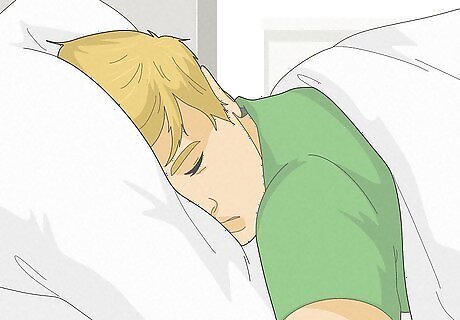
Using cannabis may help you get to sleep faster and stay asleep longer. In some studies, participants who used THC before bed reported that they had less trouble getting to sleep. Many patients also reported longer durations of sleep while they were high. This suggests that marijuana use before bed may be an effective sleep aid, especially in people with certain disorders, like anxiety, PTSD, depression, or chronic physical pains. There’s still a lot of research to be done on how cannabis affects people with sleep disorders like insomnia. Some studies suggest it may aid those who suffer from insomnia, while other studies find no concrete evidence.
Risks and Side Effects
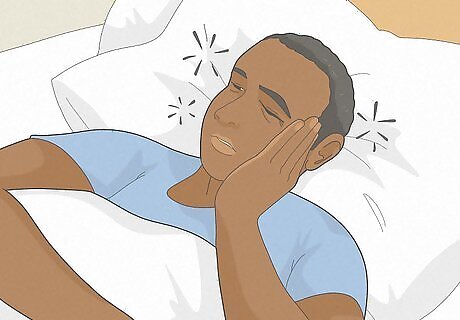
Being high may affect the quality of your sleep. Some studies find that those who use cannabis before bed have shorter rapid eye movement (REM) sleep cycles. REM sleep is the phase of sleep in which you dream, solidify new memories, and process subconscious emotions. REM sleep is vital to waking up refreshed and alert. Consistently shorter REM cycles may lead to certain diseases, like dementia, or generally poor brain activity.
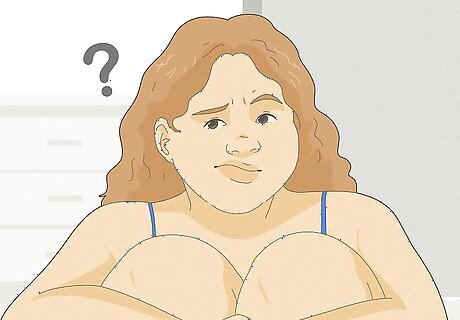
Marijuana may suppress your dreams. Since marijuana use before bed results in shorter REM cycles, which is when your brain experiences dreams, that may also mean that you experience fewer dreams, or have trouble remembering them. In addition, once you stop using marijuana before bed, you “rebound,” or experience a heightened REM cycle, which may result in even more vivid dreams. Dream suppression may be a benefit for patients with PTSD or disturbing dreams, but research into these areas is still ongoing. Much of what we know about dreams and dreaming is conjecture or extrapolation, and results may vary based on how much you smoke, your experience with marijuana, your tolerance, and many other factors.

You may be drowsy or fatigued the next day. Regular marijuana users may be familiar with the “weed hangover”—when you wake up the morning after smoking or taking an edible and feel slow or drowsy. In fact, one study shows that even 9 hours after using marijuana (and even after sleeping), your brain and motor functions may be impaired significantly. For this reason, it’s best not to use marijuana the night before a big day, or before you have any important tasks to perform. You won’t perform your best, if you’re able to perform at all. Also, sleep has very little impact on whether or not you’re high, which means it’s not technically possible to “sleep off” a high.

You may develop a dependence on cannabis to help you sleep. In a study that examined the sleep patterns of regular marijuana users, some participants were observed having a lower quality of sleep after they stopped using marijuana. They took longer to get to sleep, had shorter REM cycles, and sleep didn’t have the same refreshing effects on their brains. This suggests that regular marijuana use before bed may affect your ability to sleep if you eventually stop using it. If you believe you have a dependency, consider quitting weed and turning instead to other natural sleep aids, like melatonin.
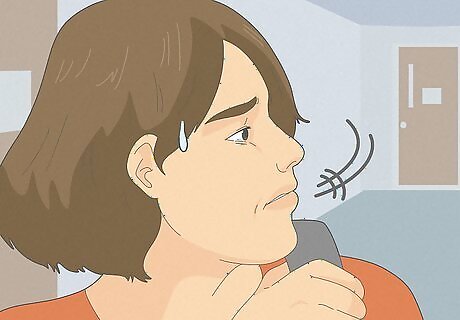
Marijuana may cause anxiety, paranoia, or nausea. In some patients, marijuana use has been known to cause anxious or paranoid behavior, as well as physical discomfort like nausea or dry mouth.. These side effects aren’t generally conducive to good sleep, so it’s recommended that you consult a doctor before using cannabis to catch some Zs.
Using Cannabis for Sleep
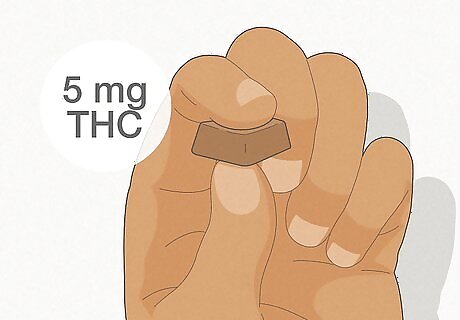
Start with a small dose an hour before bed. Diving right into the deep end may have adverse effects, like upping your anxiety or giving you troubled sleep. If you’re new to marijuana use, go low and and slow. Only take a couple of puffs off that pipe, or start with a 5 mg edible. Using cannabis an hour or two before bed, rather than right before, may help you dodge the weed hangover (though it isn’t guaranteed). Just be sure you don’t have anything important to do in that hour before you hit the hay. Also, beware the beginner’s mistake of taking more if you don’t feel the effects. While smoking may result in an immediate high this isn’t always the case, and edibles typically take 30-90 minutes to take effect.
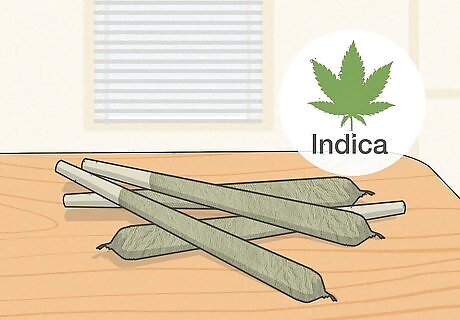
Use indica to promote relaxation. It’s widely believed that indica strains are more mellowing and relaxing, while sativa strains are energizing and promote creativity. For best results, try erring on the side of indica. That said, many experts believe that there’s no meaningful distinction between the two, save for placebo. The real sticking point may be THC versus CBD—the former is a known sedative, while the latter may be energizing in moderate doses. Try a THC-heavy strain, and avoid CBD. Also, some strains have high amounts of myrcene, a compound that contributes to sedative effects, while others have limonene, which contributes to uplifting effects. These aren’t often advertised on weed packaging, but may be the cause of the indica versus sativa debate.
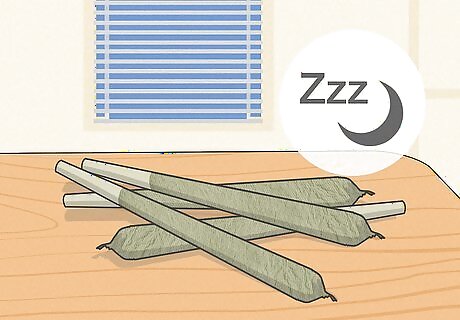
Stay away from edibles as sleep aids. One study suggests that edibles, which are often touted as a more potent way of consuming marijuana, may actually worsen the quality of your sleep when taken frequently. For that reason, opt for other methods if you’re looking to use marijuana as a sleep aid, like smoking or vaping.
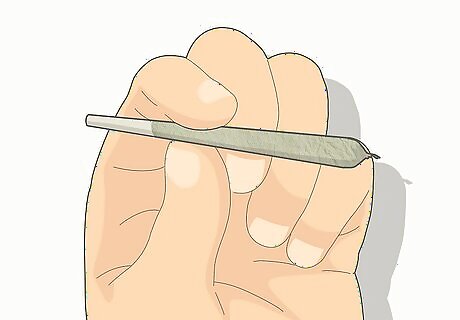
Only use cannabis occasionally as a sleep aid. Long-term, chronic use of marijuana as a sleep aid may damage your sleep patterns and the quality of your sleep once you decide to quit marijuana. For that reason, only use marijuana as a sleep aid once or twice a week, or even limit it to those nights that you really have trouble sleeping, just to play it safe. Turn to other methods of getting to sleep, like taking repeated deep breaths until you’re drowsy, lowering the temperature in your room, and turning off the lights.
Other Natural Sleep Aids

Melatonin Melatonin is a natural compound that your body produces, and which promotes both a relaxed mood and, in many instances, sleep. It’s available over-the-counter at many grocery stores and pharmacies, and is a common sleep aid. Experts recommend taking 1-3 mg an hour before bed, and to avoid upping the dose if you don’t feel it—too much may cause adverse effects like headaches or dizziness. Melatonin can be taken orally as a pill or gummy, or even as a skin patch. All are effective, so choose the form that’s most comfortable for you. Avoid taking melatonin along with prescription medications, as it can alter your medication’s effects While melatonin is a safe substance in controlled amounts, its long-term effects are still being studied. Avoid taking it as a daily supplement (stick to 1-2 times a week), and talk to a doctor to address chronic sleeping issues.
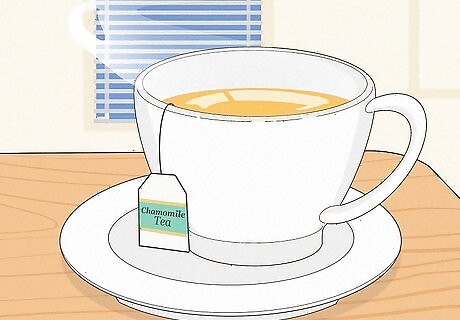
Chamomile tea Chamomile tea has been used for hundreds of years as a sedative that promotes relaxation and sleep. Just before bed, brew up some chamomile tea and drink it slowly, while doing your best to relax and destress by taking slow, deep breaths. Chamomile contains the compound apigenin, which may contribute to lowering blood pressure, which in turn may explain its tendency to promote sleep. Other teas thought to promote sleepiness include valerian root, licorice, or lemon balm.
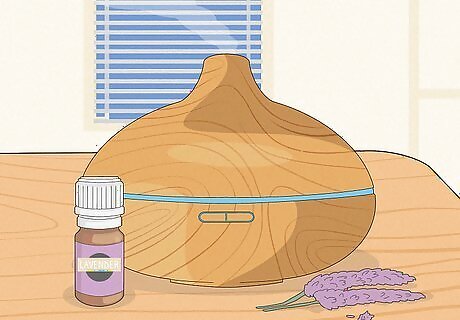
Lavender Lavender contains a number of compounds that interact with your brain to help promote sleep and relaxation, and is a time-tested and science-backed sleep aid. Place a dab of lavender essential oil in an oil diffuser or on your collarbone before bed to help you nod off, or take lavender supplements an hour before bed (in quantities indicated by the packaging).

Meditation Meditating has a host of positive health effects, from reducing stress and anxiety to improving relaxation and, yes, helping you sleep better. Climb into bed and start breathing deeply—10 seconds in, 10 seconds out. Imagine yourself in a still pond, then imagine each part of your body gradually shutting down: first your toes, then your feet, then your legs, and so on up to your head. Before you know it, you’ll be snoozing like a baby.




















Comments
0 comment